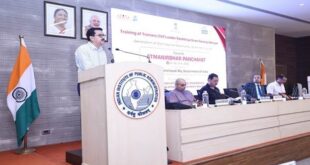- Recently data related to human rights violations in states was provided by the Ministry of Home Affairs in Rajya sabha.
- Around 40% of human rights violation cases lodged annually by the National Human Rights Commission (NHRC) in the past three financial years till this 31st October (2021) were from Uttar Pradesh.
Important points:
- A human rights violation is the disallowance of the freedom of thought and movement to which all humans legally have a right.
- While individuals can violate these rights, the leadership or government of civilization most often belittles marginalized persons.
- This, in turn, places these people in the cycle of poverty and oppression. Individuals who approach life with the attitude that not all human lives are of equal value then perpetuate this cycle.
Examples:
- Forcibly evicting people from their homes (the right to adequate housing)
- Contaminating water, for example, with waste from State-owned facilities (the right to health)
- Failure to ensure a minimum wage sufficient for a decent living (rights at work)
- Failure to prevent starvation in all areas and communities in the country (freedom from hunger).
Types:
- Violations can either be intentionally performed by the state and or come as a result of the state failing to prevent the violation.
- When a state engages in human rights violations, various actors can be involved such as police, judges, prosecutors, government officials, and more.
- The violation can be physically violent in nature, such as police brutality, while rights such as the right to a fair trial can also be violated, where no physical violence is involved.
- It occurs when there’s a conflict between individuals or groups within a society.
- If the state does nothing to intervene and protect vulnerable people and groups, it’s participating in the violations.
- In the US the state failed to protect black Americans when lynching’s frequently occurred around the country.
Way Forward
- Achieving a sustainable, practical and effective method of protecting human rights around the globe that also allows local values and culture to remain intact.
- Humans must recognize the beauty of individual differences and attempt to understand each other before a change can happen.
SOURCE: THE HINDU,THE ECONOMIC TIMES,MINT
 Chinmaya IAS Academy – Current Affairs Chinmaya IAS Academy – Current Affairs
Chinmaya IAS Academy – Current Affairs Chinmaya IAS Academy – Current Affairs



